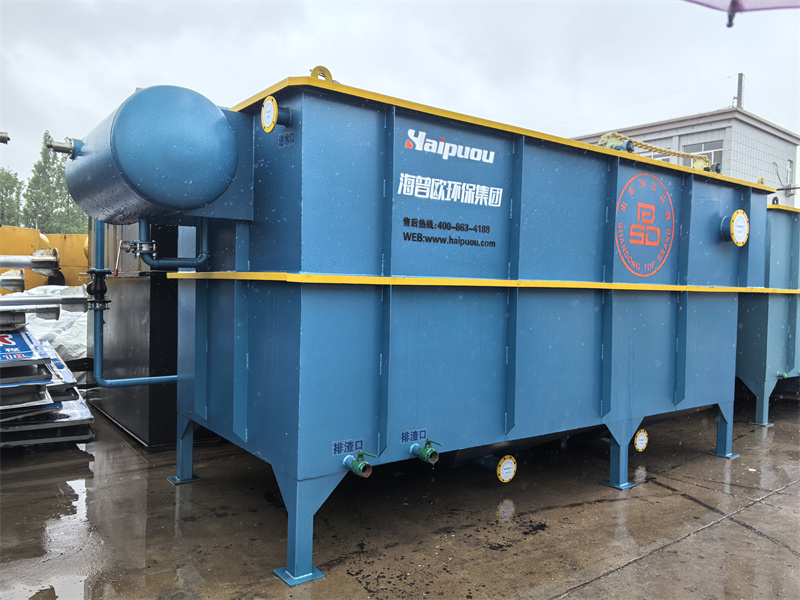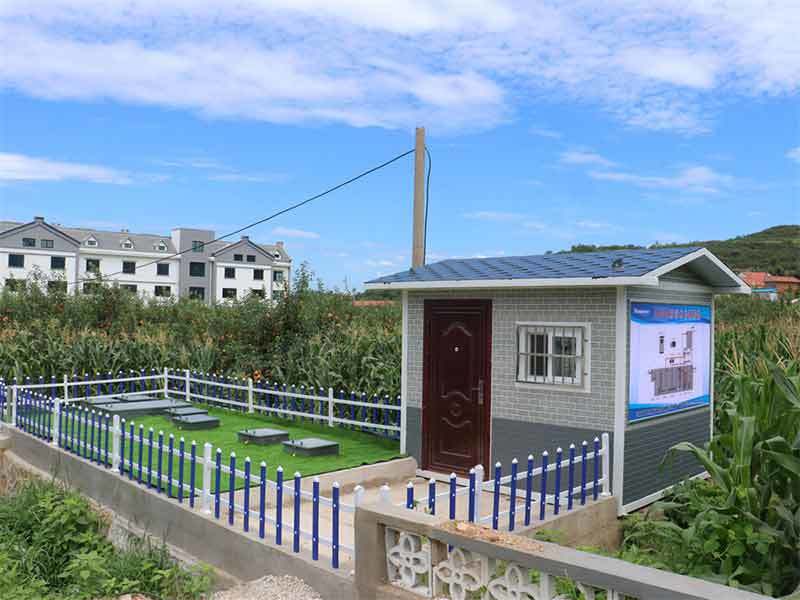- Overview
-
- Commodity name: air flotation sedimentation equipment
Air Flotation and Sedimentation Equipment
Air flotation and sedimentation equipment is a type of device commonly used in sewage treatment. It combines two processes—air flotation and sedimentation—enabling effective removal of pollutants such as suspended particles, oil, grease, and algae from sewage. The following is a detailed introduction to the equipment from aspects of working principle, structural composition, characteristics, and application s
 cope:
cope:1. Working Principle
1.1 Air Flotation Principle
Air is injected into the sewage to generate tiny bubbles. Suspended particles attach to these bubbles and rise to the water surface along with the bubbles, thereby achieving solid-liquid separation. The air flotation process mainly consists of three stages: bubble generation, bubble-particle attachment, and floating separation.
- In the bubble generation stage, air is dissolved in water through a dissolved air system to form a supersaturated solution. Then, tiny bubbles are released under reduced pressure.
- These tiny bubbles collide with and attach to the suspended particles in the sewage, forming gas-solid complexes.
- Due to the buoyancy of the bubbles, the gas-solid complexes quickly rise to the water surface, realizing the separation of suspended particles from water.
1.2 Sedimentation Principle
Leveraging the force of gravity, suspended particles in the sewage settle to the bottom of the equipment. The sedimentation process can be divided into four stages: free sedimentation, flocculent sedimentation, zone sedimentation, and compression sedimentation.
- Free sedimentation stage: Particles settle independently without interfering with each other during the sedimentation process.
- Flocculent sedimentation stage: Particles undergo flocculation during sedimentation, which increases their particle size and accelerates the sedimentation rate.
- Zone sedimentation stage: The particle concentration is relatively high, and a clear sludge-water interface is formed during sedimentation, with the interface sinking gradually.
- Compression sedimentation stage: The sludge that has settled to the bottom of the equipment is further compressed under gravity, reducing the water content of the sludge.
2. Structural Composition
2.1 Dissolved Air System
It includes equipment such as a dissolved air tank, air compressor, and water pump. Its function is to dissolve air in water to form supersaturated dissolved air water.
2.2 Air Flotation Tank
As the core part of the air flotation and sedimentation equipment, it consists of a water inlet zone, reaction zone, air flotation zone, and water outlet zone.
- Sewage is mixed with dissolved air water in the water inlet zone and then enters the reaction zone, where flocculants are added to make suspended particles form flocs.
- The mixture then enters the air flotation zone, where tiny bubbles attach to the flocs and rise to the water surface to achieve solid-liquid separation.
- The separated clear water is discharged from the water outlet zone, while the scum is scraped into the sludge tank by a scum scraper.
2.3 Sedimentation Zone
Located below the air flotation tank, it is used for further sedimentation and removal of suspended particles in the sewage that fail to be separated by air flotation. The sedimentation zone is equipped with a sludge hopper for collecting the settled sludge.
2.4 Control System
It is used to control the operating parameters of the equipment, such as dissolved air pressure, dissolved air water volume, and the operating time of the scum scraper and sludge discharger. This ensures the stable operation of the equipment and the effectiveness of sewage treatment.
3. Characteristics
3.1 High Efficiency
By combining the air flotation and sedimentation processes, the equipment can give full play to the advantages of both processes and achieve high removal efficiency for pollutants like suspended particles and oil in sewage.
3.2 Strong Adaptability
The equipment has strong adaptability to changes in the quality and quantity of sewage, and can treat sewage of different types and concentrations.
3.3 Small Floor Space
Compared with traditional sedimentation tanks, the air flotation zone of this equipment can achieve solid-liquid separation in a shorter time, so the floor space occupied by the equipment is relatively small.
3.4 Low Sludge Water Content
The water content of the scum generated during the air flotation process is low, generally between 95% and 97%, which is conducive to the subsequent treatment and disposal of sludge.
4. Application Scope
4.1 Industrial Wastewater Treatment
It is widely used in the treatment of industrial wastewater from industries such as chemical engineering, electroplating, printing and dyeing, papermaking, and food processing. It can effectively remove pollutants such as suspended particles, oil, grease, and heavy metal ions from wastewater.
4.2 Domestic Sewage Treatment
It can be used for the pretreatment or advanced treatment of urban domestic sewage, improving the sewage treatment effect and reducing environmental pollution.
4.3 Drinking Water Treatment
In areas where the quality of raw water is relatively poor, the air flotation and sedimentation equipment can be used as a pretreatment process for drinking water treatment. It removes pollutants such as algae and organic matter from raw water, improving the quality of drinking water.
4.4 Other Fields
It can also be applied in fields such as aquaculture wastewater treatment and landscape water treatment, with good treatment effects and broad application prospects.
Keywords:
Messages
Contact: +86 18016210178 (Ms.Liu)
Add:No.56, Donghuan Road, Zhucheng City, Weifang City, Shandong Province







